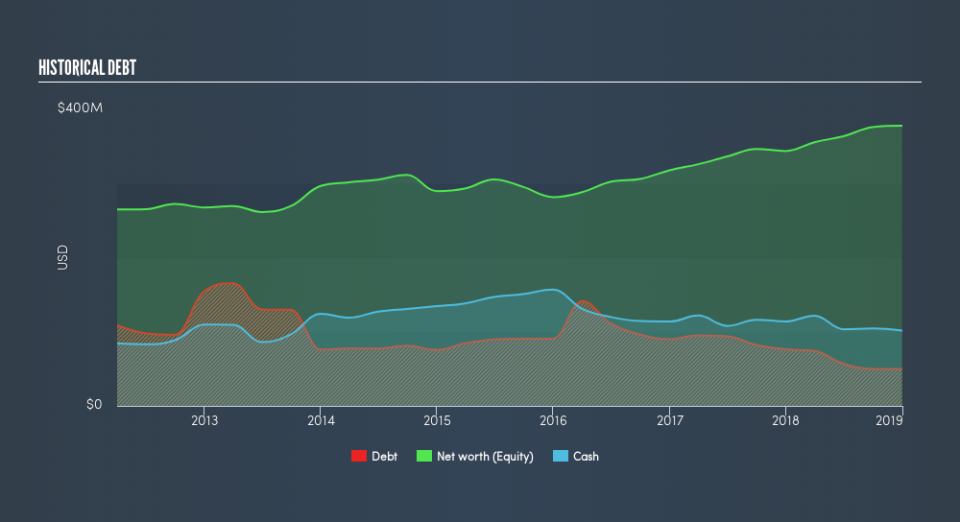Is CTS Corporation (NYSE:CTS) A Financially Sound Company?

Investors are always looking for growth in small-cap stocks like CTS Corporation (NYSE:CTS), with a market cap of US$1.1b. However, an important fact which most ignore is: how financially healthy is the business? Electronic companies, even ones that are profitable, are more likely to be higher risk. Assessing first and foremost the financial health is crucial. I believe these basic checks tell most of the story you need to know. Though, this commentary is still very high-level, so I recommend you dig deeper yourself into CTS here.
How much cash does CTS generate through its operations?
CTS’s debt levels have fallen from US$76m to US$50m over the last 12 months , which includes long-term debt. With this debt repayment, CTS’s cash and short-term investments stands at US$102m , ready to deploy into the business. Moreover, CTS has produced cash from operations of US$58m in the last twelve months, resulting in an operating cash to total debt ratio of 116%, meaning that CTS’s debt is appropriately covered by operating cash. This ratio can also be a sign of operational efficiency as an alternative to return on assets. In CTS’s case, it is able to generate 1.16x cash from its debt capital.
Can CTS meet its short-term obligations with the cash in hand?
At the current liabilities level of US$104m, the company has been able to meet these commitments with a current assets level of US$239m, leading to a 2.3x current account ratio. Usually, for Electronic companies, this is a suitable ratio since there’s a sufficient cash cushion without leaving too much capital idle or in low-earning investments.
Does CTS face the risk of succumbing to its debt-load?
CTS’s level of debt is appropriate relative to its total equity, at 13%. CTS is not taking on too much debt commitment, which can be restrictive and risky for equity-holders. We can check to see whether CTS is able to meet its debt obligations by looking at the net interest coverage ratio. A company generating earnings before interest and tax (EBIT) at least three times its net interest payments is considered financially sound. In CTS’s, case, the ratio of 255x suggests that interest is comfortably covered, which means that lenders may be less hesitant to lend out more funding as CTS’s high interest coverage is seen as responsible and safe practice.
Next Steps:
CTS has demonstrated its ability to generate sufficient levels of cash flow, while its debt hovers at a safe level. Furthermore, the company will be able to pay all of its upcoming liabilities from its current short-term assets. I admit this is a fairly basic analysis for CTS’s financial health. Other important fundamentals need to be considered alongside. You should continue to research CTS to get a better picture of the stock by looking at:
Future Outlook: What are well-informed industry analysts predicting for CTS’s future growth? Take a look at our free research report of analyst consensus for CTS’s outlook.
Valuation: What is CTS worth today? Is the stock undervalued, even when its growth outlook is factored into its intrinsic value? The intrinsic value infographic in our free research report helps visualize whether CTS is currently mispriced by the market.
Other High-Performing Stocks: Are there other stocks that provide better prospects with proven track records? Explore our free list of these great stocks here.
We aim to bring you long-term focused research analysis driven by fundamental data. Note that our analysis may not factor in the latest price-sensitive company announcements or qualitative material.
If you spot an error that warrants correction, please contact the editor at editorial-team@simplywallst.com. This article by Simply Wall St is general in nature. It does not constitute a recommendation to buy or sell any stock, and does not take account of your objectives, or your financial situation. Simply Wall St has no position in the stocks mentioned. Thank you for reading.

